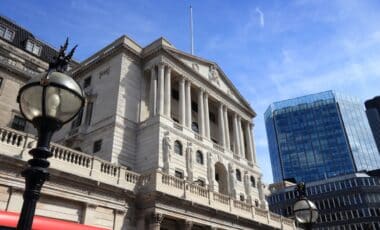The pound sterling fell sharply following the Bank of England’s decision to cut interest rates, a move aimed at supporting the struggling UK economy amid ongoing concerns over sluggish growth and rising inflation. This unexpected rate cut signals a shift in monetary policy as policymakers attempt to strike a balance between boosting economic activity and preventing further financial instability.
While financial markets reacted swiftly to the announcement, the broader implications of this decision extend beyond the foreign exchange market, affecting key economic indicators such as inflation, employment, and consumer confidence. A weaker pound can provide some advantages for exporters but may also increase the cost of imported goods, adding to inflationary pressures.
As policymakers weigh the next steps, analysts remain divided on whether this strategy will provide the necessary stimulus to stabilise the economy or introduce further uncertainty. Some experts see the move as a necessary response to sluggish economic growth, while others warn of potential risks, including increased financial strain on households and businesses already grappling with rising costs. The coming months will be critical in determining whether the Bank’s decision will ease economic pressures or create new challenges for the UK.
Interest rate cut triggers market fluctuations
The Bank of England’s Monetary Policy Committee (MPC) voted 7 to 2 in favour of reducing the base interest rate to 4.5%, marking the lowest level in over 18 months. Two members of the committee advocated for an even deeper cut to 4.25%, reflecting concerns over slowing economic growth.
Following the announcement, the pound fell by 1.1% against the US dollar, reaching $1.244 before recovering slightly by the end of the trading day. Against the euro, the currency was down 0.3%, closing at €1.199.
While the FTSE 100 index saw an initial boost from the decision, with a 1.2% rise by the close of trading, some analysts warned that this reaction might not be as strong as it appears. Joe Maher of Capital Economics told The Telegraph: “A weaker sterling exchange rate has flattened the FTSE’s performance in local-currency terms as a large share of firms in the index earn significant revenue overseas.” He further explained, “A weaker pound pushes the value of overseas revenues higher in pound terms. Indices of shares of smaller UK companies, which typically earn less of their overall revenue overseas, have performed poorly over the past few months.”
Economic growth and inflation concerns
The Bank of England also revised its economic forecasts, cutting its UK GDP growth projection for 2024 to 0.75%, down from an earlier estimate of 1.5%. Looking ahead, growth in 2025 is expected to remain subdued. However, the outlook for 2026 and 2027 is slightly more optimistic, with growth projections rising to 1.5%, an increase of 0.25 percentage points from previous estimates.
Meanwhile, inflation remains a major concern. The Bank expects the Consumer Price Index (CPI) to peak at 3.7% this summer before gradually easing. Several factors are driving inflation higher, including:
- Rising energy prices, which remain above expectations.
- Increases in household bills, particularly water charges.
- Higher transport costs, including bus fares.
Despite these pressures, the Bank of England remains committed to lowering interest rates further if economic conditions permit.
Impact on employment and fiscal policy
The interest rate cut comes against the backdrop of £40 billion in tax rises introduced by Chancellor Rachel Reeves in last year’s budget. These fiscal measures, combined with broader economic uncertainty, have prompted the Bank to revise its unemployment forecast, predicting a peak of 4.75% in the coming months.
The effects of the October Budget and ongoing inflation concerns have placed pressure on consumer spending, with businesses and households adjusting to changing financial conditions. While Sir Keir Starmer welcomed the interest rate cut, suggesting it would “put more money in people’s pockets”, some economists warn that rising unemployment could offset any benefits from lower borrowing costs.
Mixed reaction from financial markets
While the interest rate cut initially boosted London’s FTSE 100, experts caution that the underlying market dynamics remain complex. The stock market rally was largely driven by expectations of further monetary easing rather than immediate economic improvements.
Danni Hewson, finance analyst at AJ Bell, commented on investor sentiment: “The latest interest rate cut might come with warnings about weak growth and the unpleasant return of higher prices, but today investors were happy to look past that and focus instead on the prospect of more cuts this year than had previously been priced in.”
However, the reaction among smaller UK businesses has been more muted. Companies that generate less revenue from overseas have faced greater challenges in recent months, as a weaker pound does not provide them with the same financial advantages enjoyed by larger, internationally focused firms.
Bank of England’s cautious approach
Looking ahead, Bank of England Governor Andrew Bailey has indicated that the central bank will take a “gradual and careful approach” when considering further rate cuts. While the current focus remains on supporting economic growth, the Bank must also monitor global risks, including potential US trade tariffs and fluctuations in international markets.
The next MPC meeting will be closely watched by investors and policymakers, as they assess whether the UK economy can navigate the challenges ahead while maintaining financial stability.









